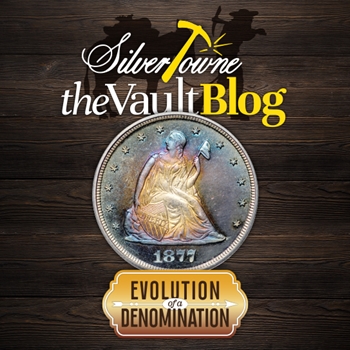
While the twenty-cent piece did not make its official debut until the mid 1870s, conceptually it had been around since the early 1780s. The one and only denomination of its kind, the short-lived coin certainly had its hang ups, but it also produced one of the most famous rarities in United States coinage history. With having just one type issued, the twenty-cent piece has quite the story.
Beginning its four-year run next year, the Mint will issue five quarters a year through 2025 honoring extraordinary women with ethnically, racially, and geographically diverse backgrounds whose accomplishments span a wide range of fields including suffrage, science, humanities, government, civil rights, space, the arts, and more. Those women to be honored on next year’s designs include Maya Angelou, Dr. Sally Ride, Wilma Mankiller, Nina Otero-Warren, and Anna May Wong.
Liberty Seated Twenty-Cent Piece (1875-1878)
First introduced in 1783 by Thomas Jefferson as an idea that would be a part of the decimal system of coinage, it was quickly shot down and left behind in favor of the quarter dollar during the Mint Act of 1792. At the time, the Spanish eight reales were being used and the quarter was closer in the “two-bits” sense. The idea of the twenty-cent piece was once again brought up in 1806 but was once again left on the table.
Finally, the Mint Act of 1873 brought the idea into fruition in large part to its abolishment of the silver three-cent piece, half dime, and dollar. With those coins, especially the dime, it would become harder and harder to get the correct change of a quarter. San Francisco and Carson City were also not allowed to produce minor coins. Those who chose to pay with a quarter would often get shortchanged as a number of items in 1874 were priced at ten cents. Demand was lacking due to the decline in output as a result of the Mint Act of 1873 and the owners of the Comstock Lode silver mines would find themselves at a loss. Finally, in February of 1874, Senator John Percival Jones from Nevada introduced a bill that would make the twenty-cent piece a physical reality and would solve the problem of the small change shortage. Mint Director Henry Linderman would give the bill his full support and Congress would follow suit. The twenty-cent piece was then authorized by the Act of March 3, 1875.
The first designs of the coin looked too much like the quarter and were thought to be too confusing for the public to distinguish. The end result of the design of the obverse would feature the Liberty Seated design as produced by Chief Engraver William Barber. Surrounded by 13 stars and the date below, she would be holding the staff topped with a Liberty cap. The reverse features the eagle as seen on the Trade dollar, also designed by Barber. “UNITED STATES OF AMERICA” and “TWENTY CENTS” are seen curved along the top and bottom of the coin. The coin was also made with a plain edge which was another marker used to distinguish it from the quarter dollar.
Over 1.3 million twenty-cent pieces ended up being produced between 1875 and 1878. However, the public almost immediately disliked the coin as they thought it was too similar to the quarter dollar. The coins were struck at Philadelphia, Carson City and San Francisco with the most rare of the series being that of the 1876-CC as only 10,000 were minted.
Source: NGCCoin.com; The Official 2022 Red Book







